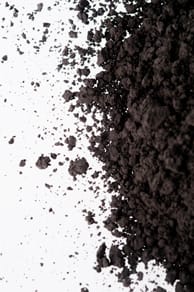Today’s catheters are used to diagnose and treat more distal vascular areas, requiring smaller and more precise device components than ever before. Many of these devices must be visible under fluoroscopy to ensure proper placement and navigation during the procedure; yet, plastics used for the construction of these devices are inherently transparent under x-ray. As a result, radiopaque fillers must be blended into the base polymers to provide the necessary visibility or radiopacity.
Foster LoPro® Radiopaque Compounds
Foster LoPro® Radiopaque Compounds include a wide range of the most advanced radiopaque fillers and medical grade polymers to create high quality compounds required for small, ‘low profile’ designs. Medical device manufacturers can work with our team of polymer scientists to custom formulate a blend, tailored to specific application requirements.
Specialty LoPro® Radiopaque Compounds
In addition to the standard LoPro® product line, Foster Corporation has also developed a portfolio of specialty radiopaque materials that were designed with the most critical application requirements in mind.
LoPro Clear™ – Introduced in 2013, LoPro Clear™ is a radiopaque polyurethane that is both x-ray visible and optically transparent. Catheters extruded from LoPro Clear™ can be located inside the body using fluoroscopy while fluid can be visually monitored outside of the body.
LoPro Plus™ – LoPro Plus™ radiopaque compounds are reinforced with nanoparticles for improved pushability of thin-walled catheters. These compounds allow for extrusion of single layer catheters with radiopacity and strength equivalent to conventional bi-layer constructions, in which each layer provides a distinct property.
Common Radiopaque Filler Options
Bismuth Subcarbonate (Bi2O2CO3) offers greater radiopacity that barium sulfate and can be added in smaller volume loadings than barium to achieve comparable results. It is a white powder with high tinting strength, thus limiting color matching in some instances. It is limited by processing temperatures (yellows at 400 F) and in some polymers (not compatible with thermoplastic polyurethanes).Barium Sulfate (BaSO4) was the first radiopaque filler widely used in medical formulations. It is a relatively inexpensive white powder that has excellent process stability. High loadings are required for comparable radiopacity to other fillers. Because it has poor tinting strength, it is relatively easy to color.
Bismuth Oxychloride (BiOCI) provides excellent radiopacity and is compatible with a wide range of polymers. It is more temperature stable than bismuth subcarbonate. White ‘platelet-like’ particles provide a smooth, pearlescent finish on components. This can provide limitations to exact color matches.
Bismuth Trioxide (Bi2O3) also offers excellent radiopacity in comparably lower loadings and is compatible with most polymers. It is yellow in color and can turn brown at elevated processing temperatures, limiting color matching. Gritty surfaces in finished parts limit use in thin wall and critical surface components.
Tungsten (W) is a very heavy metal powder that is compatible with virtually all polymers at very high loadings by weight. It is dark gray in color and can produce a matte finish in high concentrations, providing substantial restrictions for color matching. Polymer compounds with tungsten can be abrasive on processing equipment. However, it is a filler of choice in very thin walled devices where radiopacity is critical.
Others: Additional radiopaque filler options may be available upon request or by design from our polymer engineering team. Specialty radiopaque fillers, including those used in LoPro Clear™ formulations are proprietary to Foster Corporation.

Market Applications
Interventional Cardiology – Percutaneous Transluminal Coronary Angioplasty (PTCA) devices now reach smaller vascular pathways in and around the heart to deploy balloons that deliver lifesaving stents. Radiopaque compounds provide necessary visibility for physicians navigating these small, thin-walled catheter shafts to the therapeutic region. Tungsten filled polymers replace gold marker bands for substantial visibility and identification of the distal tip.
Interventional Radiology – Small diameter, multi-lumen catheters allow for a wide range of therapeutic applications in radiology. Barium filled polymers, particularly in urethane-based resins (that soften at body temperature), are ideal for peripherally inserted lines and drainage catheters. Increased pushability to more distal vascular regions for angiographic imaging or therapeutic ablation will also benefit from a wide selection of radiopaque formulations using on polyamide polymers with bismuth fillers.
Neurology – Neurological catheters demand excellent mechanical properties to reach distant therapeutic sites as well as sufficient radiopacity for visibility of the small diameter, thin-walled devices. Tungsten filled compounds provide excellent visibility for both diagnostic and therapeutic neurologic catheters. Bismuth filled compounds have also been designed for additional neurological applications such as embolization catheters used to block abnormal blood vessels, most commonly to prevent aneurysms.
Implants – The use of polymers structural devices from spinal cages to dental implants is rapidly expanding. Radiopaque additives allow implanted polymers such as PEEK or polyethylene to remain visible to the physician well after surgery. Foster’s dedicated clean room compounding operations are designed to manufacture radiopaque formulations for implant devices under cGMP conditions.
Documentation
